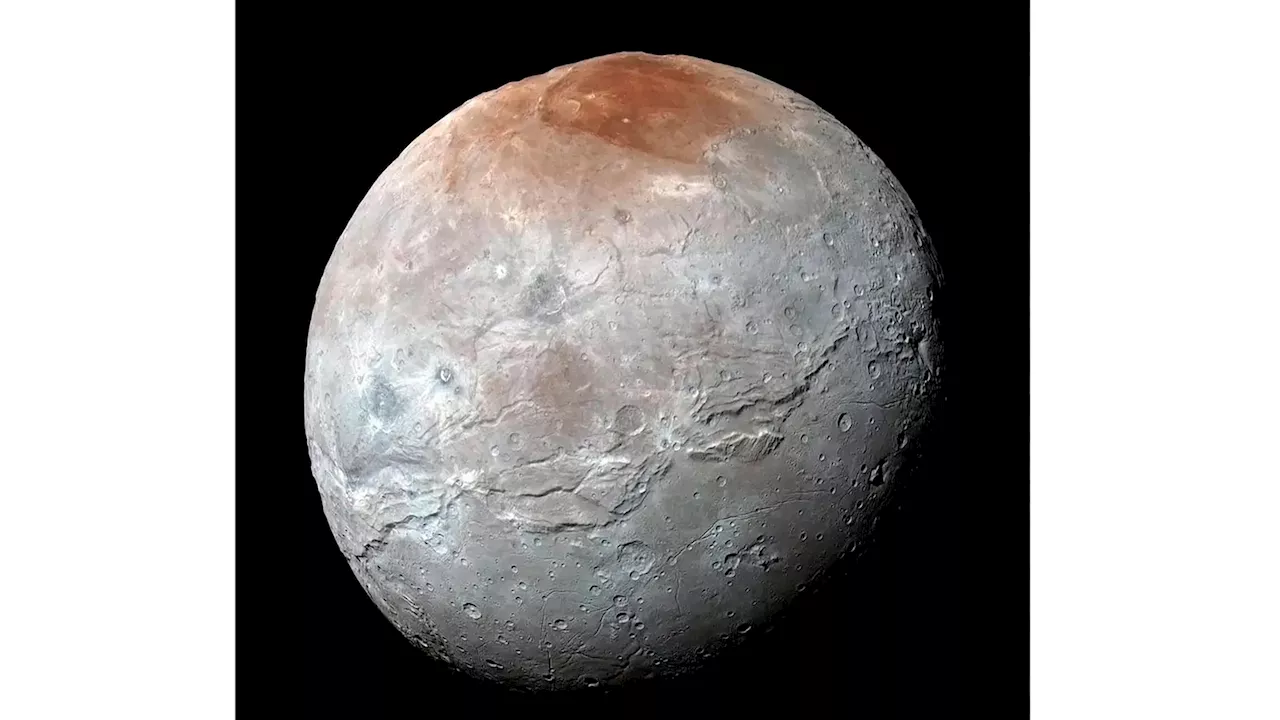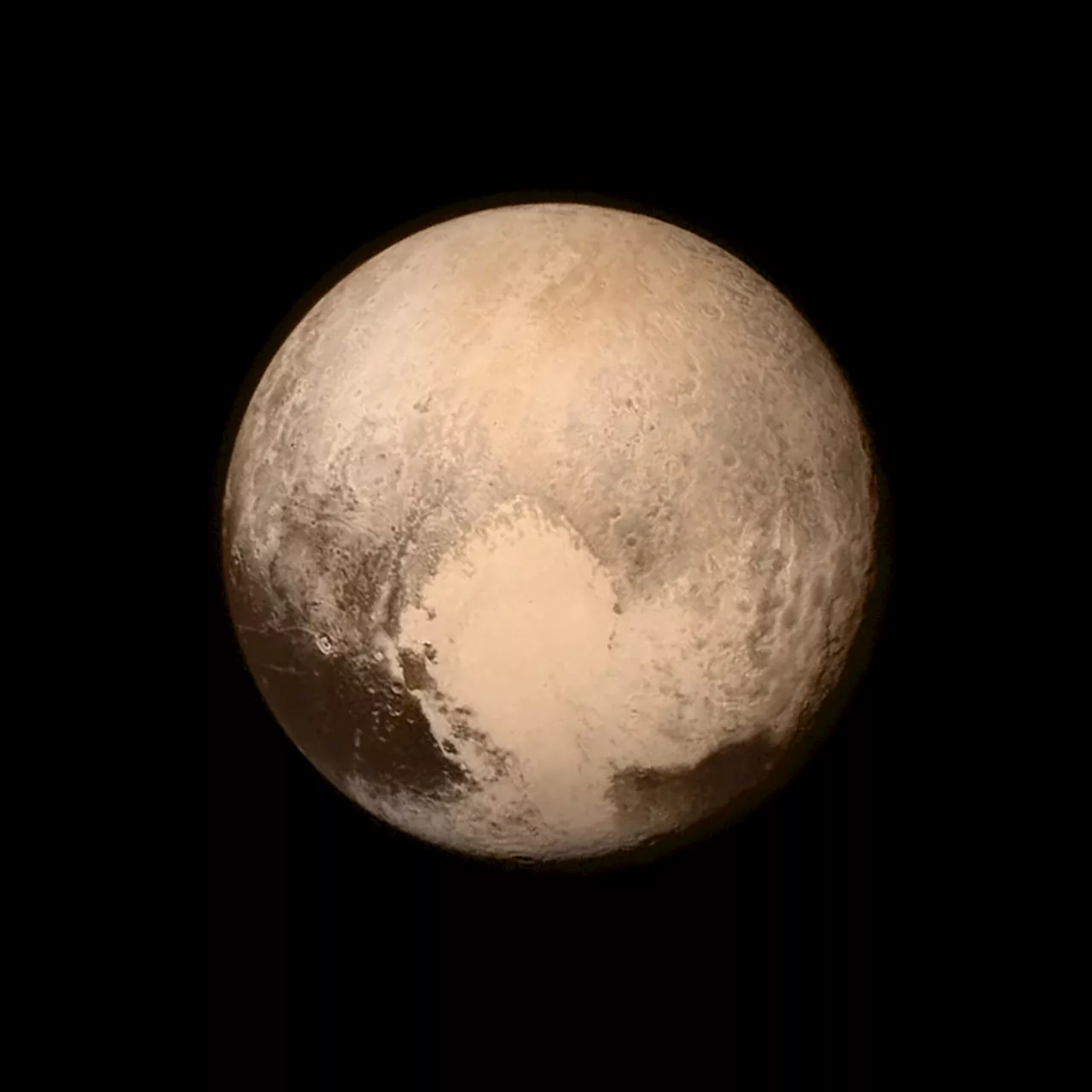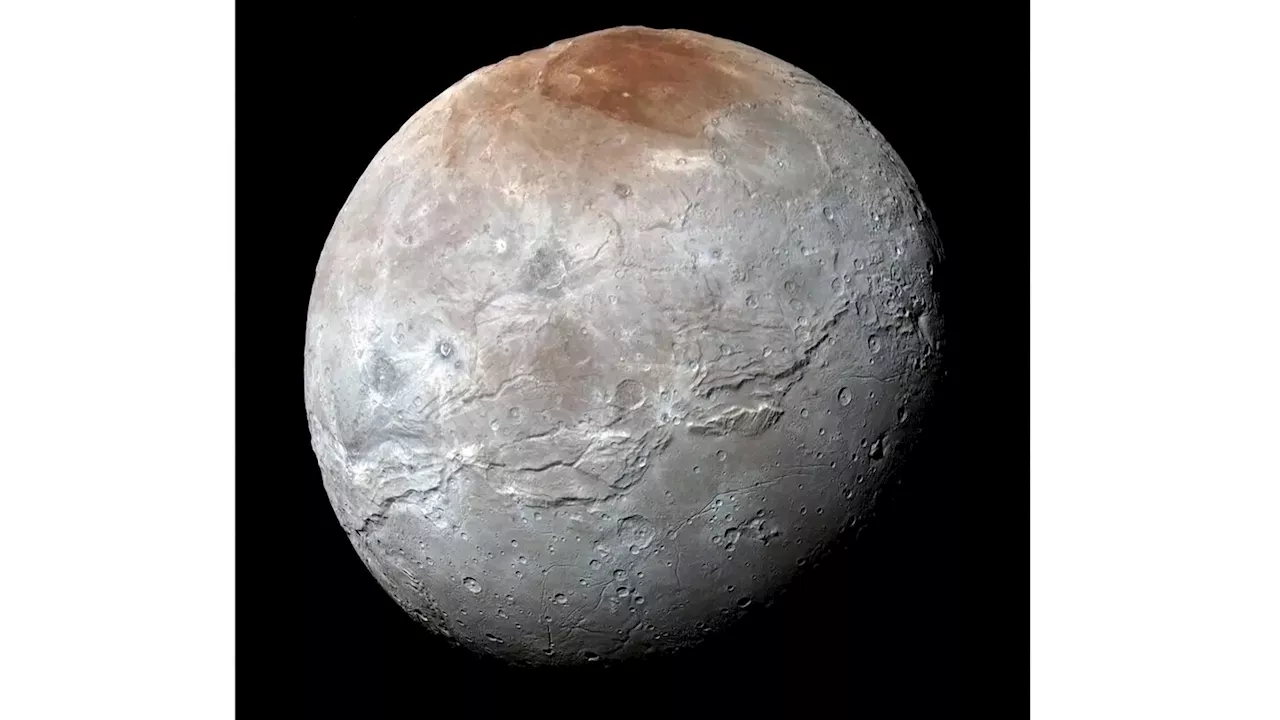NASA’s Webb Space Telescope has identified new clues about the surface of Pluto’s largest moon. It detected for the first time traces of carbon dioxide and hydrogen peroxide on Charon's surface. Previous research, including a 2015 NASA flyby, showed that Charon's surface was coated by water ice.
This image provided by NASA shows an enhanced color view of Pluto’s big moon Charon captured by the New Horizons spacecraft, July 14, 2015. in 2015, revealed that the moon’s surface was coated by water ice. But scientists couldn’t sense chemicals lurking at certain infrared wavelengths until the Webb telescope came around to fill in the gaps.
“There’s a lot of fingerprints of chemicals that we otherwise wouldn’t get to see,” said Carly Howett, a New Horizons scientist who was not involved with the new study.Pluto, a dwarf planet, and its moons are in the far fringes of our solar system in a zone known as the Kuiper Belt. Besides water ice, ammonia and organic materials were previously detected on Charon. Both Pluto and Charon are over 3 billion miles from the sun and are likely too chilly to support life.
Scientists think the hydrogen peroxide may have sprung from radiation pinging off water molecules on Charon’s surface. The carbon dioxide might spew to the surface after impacts, said study co-author Silvia Protopapa from the Southwest Research Institute.Helene and other storms dumped a whopping 40 trillion gallons of rain on the SouthThe latest detection is key to studying how Charon came to be and may help scientists tease out the makeup of other faraway moons and planets.
Trending News Planets A Science
United States Latest News, United States Headlines
Similar News:You can also read news stories similar to this one that we have collected from other news sources.
 James Webb Space Telescope deciphers the origins of Pluto's icy moon CharonRobert Lea is a science journalist in the U.K. whose articles have been published in Physics World, New Scientist, Astronomy Magazine, All About Space, Newsweek and ZME Science. He also writes about science communication for Elsevier and the European Journal of Physics. Rob holds a bachelor of science degree in physics and astronomy from the U.K.
James Webb Space Telescope deciphers the origins of Pluto's icy moon CharonRobert Lea is a science journalist in the U.K. whose articles have been published in Physics World, New Scientist, Astronomy Magazine, All About Space, Newsweek and ZME Science. He also writes about science communication for Elsevier and the European Journal of Physics. Rob holds a bachelor of science degree in physics and astronomy from the U.K.
Read more »
 NASA's Webb telescope detects traces of carbon dioxide on the surface of Pluto's moonNASA’s Webb Space Telescope has identified new clues about the surface of Pluto’s largest moon
NASA's Webb telescope detects traces of carbon dioxide on the surface of Pluto's moonNASA’s Webb Space Telescope has identified new clues about the surface of Pluto’s largest moon
Read more »
 Pluto mission: South African astronomers join forces with NASA to learn more about the dwarf planetWhen the International Astronomical Union announced in 2006 that Pluto was being demoted from its status as the sun's ninth planet, many astronomers and non-experts alike were shocked.
Pluto mission: South African astronomers join forces with NASA to learn more about the dwarf planetWhen the International Astronomical Union announced in 2006 that Pluto was being demoted from its status as the sun's ninth planet, many astronomers and non-experts alike were shocked.
Read more »
 NASA's Webb provides another look into galactic collisionsAstronomers examined galaxy Arp 107 which has revealed a wealth of information about star-formation and how two galaxies collided hundreds of million years ago. Arp 107 is located 465 million light-years from Earth in the constellation Leo Minor.
NASA's Webb provides another look into galactic collisionsAstronomers examined galaxy Arp 107 which has revealed a wealth of information about star-formation and how two galaxies collided hundreds of million years ago. Arp 107 is located 465 million light-years from Earth in the constellation Leo Minor.
Read more »
 NASA's Webb peers into the extreme outer galaxyAstronomers have directed NASA's James Webb Space Telescope to examine the outskirts of our Milky Way galaxy. Scientists call this region the Extreme Outer Galaxy due to its location more than 58,000 light-years away from the Galactic Center. (For comparison, Earth is approximately 26,000 light-years from the center.
NASA's Webb peers into the extreme outer galaxyAstronomers have directed NASA's James Webb Space Telescope to examine the outskirts of our Milky Way galaxy. Scientists call this region the Extreme Outer Galaxy due to its location more than 58,000 light-years away from the Galactic Center. (For comparison, Earth is approximately 26,000 light-years from the center.
Read more »
 NASA MINDS FAQ - NASACheck back soon for updated frequently asked questions.
NASA MINDS FAQ - NASACheck back soon for updated frequently asked questions.
Read more »
